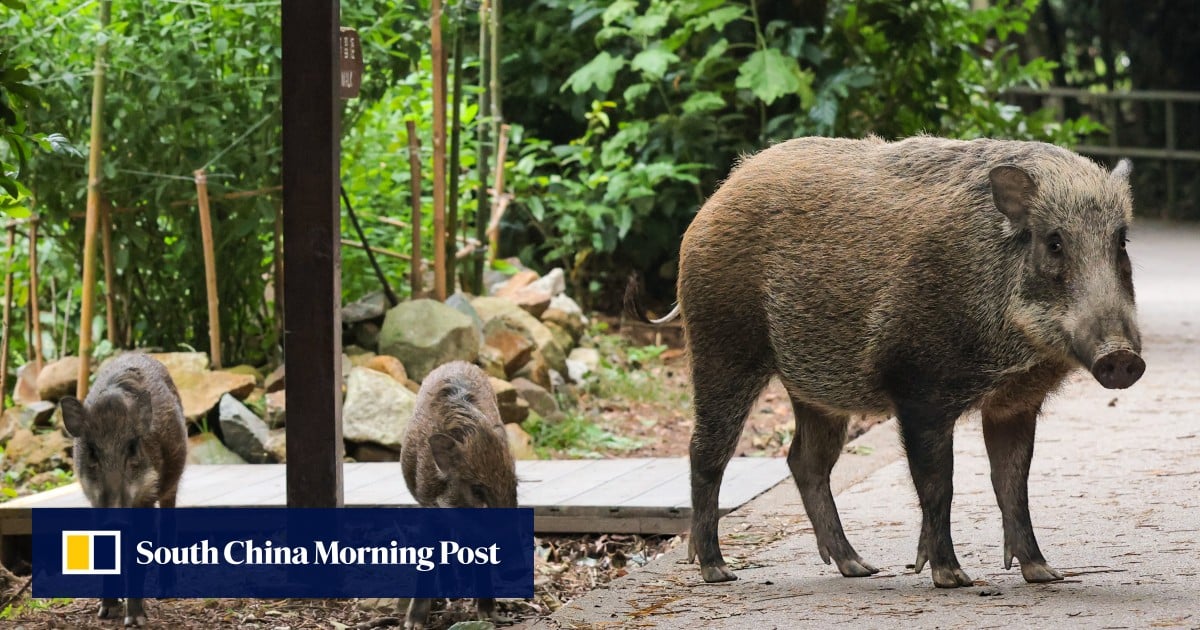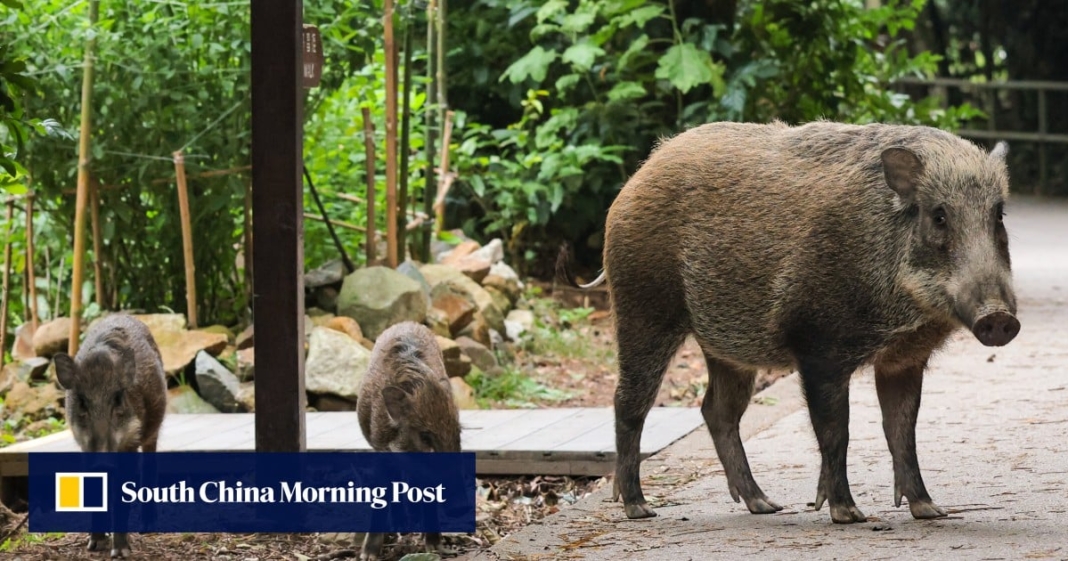
The size of Hong Kong’s wild boar population dropped by 26 per cent last year compared with 2022, as authorities ramped up culling.
Secretary for Environment and Ecology Tse Chin-wan told lawmakers on Wednesday the Agriculture, Fisheries and Conservation Department had “humanely dispatched” more than 910 boars since regular culling began in late 2021 to “reduce nuisance” the animals caused to the public.
On average, 41 boars were culled each month last year, an increase from 24 in 2022. Over the same period, the number of wild boars dropped to about 1,360 last year, down by 26 per cent from around 1,830 in 2022.
The minister said the department had increased the frequency of culling and improved efficiency last year by installing surveillance cameras and new types of traps.
The number of reports of people being hurt by boars dropped from 36 in 2022 to nine last year. The number of reports of sightings or nuisance stood at 1,133 in 2022, and fell slightly to 1,128 last year.
The four districts with the most reports were Tai Po, Sai Kung, Sha Tin and Southern, each logging more than 100 cases.
The department said humans feeding the animals was the main reason for wild pig nuisance and urged the public not to do so.
Hong Kong wild boar incident where man was bitten and creature killed questioned
Hong Kong wild boar incident where man was bitten and creature killed questioned
In November last year, the government proposed legal changes to increase the maximum penalty for feeding wild animals from a fine of HK$10,000 (US$1,280) to HK$100,000 and a year in jail. A fixed penalty ticket of HK$5,000 for illegal feeding was also proposed. The new arrangements will come into effect in August this year if the bill is passed.
The department ran a programme to sterilise captured wild boars and relocate them to rural areas from the end of 2017 to late 2021, but the speed of the work was easily outstripped by the breeding rate of the animals.
5 Hong Kong workers, policeman hurt in wild boar attack at construction site
5 Hong Kong workers, policeman hurt in wild boar attack at construction site
“Once wild pigs became accustomed to being fed by humans, they would continue to return to urban or residential areas relentlessly to seek food from humans even after being relocated to rural areas,” Tse wrote, explaining why culling was adopted.
But animal rights concern groups have condemned the government arrangement as “despicable and bloody”, noting it involved luring the animals with food before killing them.
Source: scmp.com



